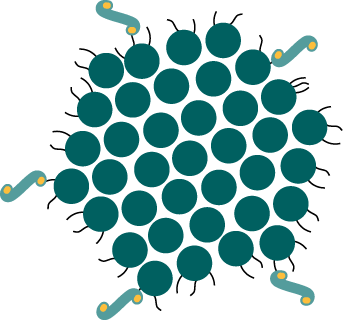Starting at the top! Cheese, at its most basic level, is the end product of processes focused on the removal of water from fluid milk. In many cases, the shelf-life of cheese is at the very least an order of magnitude greater than that of pasteurized milk. This is accomplished several ways. Click on to find out...
For the purposes of this chart, we can think of unripened cheeses as those that are made by coagulating milk with acid. (The acid can either come from direct acidification or the use of cultures) Another way to think about these cheeses are those that aren't getting tremendous amounts of flavor from the cultures that may have been added. Latin American (no acid, rennet-coagulated) cheeses were also placed in this group.
Ripened cheeses are made with coagulating enzymes and culture aids. Rennet, the enzyme originally extracted from calf's stomach, is a common example of such enzyme. Theses cheeses develop quite complex flavors through the use of bacteria and molds. Much of the character of these cheeses comes directly from the microbes being used.

Cheeses that are made by coagulating milk with an acid. Acids can be added directly, or acids that are produced from the use of a culture. Common acids are: lactic acid (pictured), acetic acid (vinegar), and citric acid. Acid neutralizes charges on casein micelles allowing them to aggregate, forming curds.

Acid and heat are used in unison to acheive final cheese texture and body. Heat denatures whey proteins allowing them to "stick" to the surface of casein micelles. These "extra-hairy" caseins (pictured) are then aggregated leading to the final texture of the cheese.
Usually, milk is pre-acidified before rennet is added. This affects final texture of the cheese. Acids used are usually: citric acid, lactic acid, or acetic acid. Acids produced through culture metabolism is a common method.
These cheeses don't usually include acid, giving them a shorter shelf life and mandating very strict manufacturing practices to prevent contamination. Rennet was originally extracted from calves' stomachs (pictured). Microbial, mold-based, and vegetable-based alternatives are also available.

This category is where most of the current cheeses on the market fall into. Bacterial cultures are used in the cheese body and/or applied to the surface to generate unique flavors and textures.
These cheeses usually include those with very strong flavors: both blue and white mold cheeses. Many different mold strains exist and each lend their own unique character to cheese.

These cheeses get much of there flavor through the use cultures (bacteria) The biochemical pathways of the flavor generation is quite complex. McSweeney did a very comprehensive review. This category, along with external bacteria ripened cheeses, make up the vast majority of cheeses on the market.
This is a fun category. Some notorious cheeses are included here. Bacteria are applied to the outside of the cheese (often called a smear). One such bacteria is brevibacterium (pictured) which is also found on feet. Yum! In all seriousness though, some very good cheeses are in this category with very distinct and strong flavors.
Also called "blue mold" cheeses, these are the cheeses with very distinct blue/green streaks throughout their interiors. The molds used include those from the Penicillium genus. Penicillium roqueforti is pictured at right.
Also called "white mold" cheeses, these are the cheeses with a distinctive white exterior. Brie and camembert cheeses are belong to this group. The molds used have very distinctive metabolisms that usually lead to mushroom and ammonia-like odors. Penicillium camemberti is an example of a white mold (pictured).